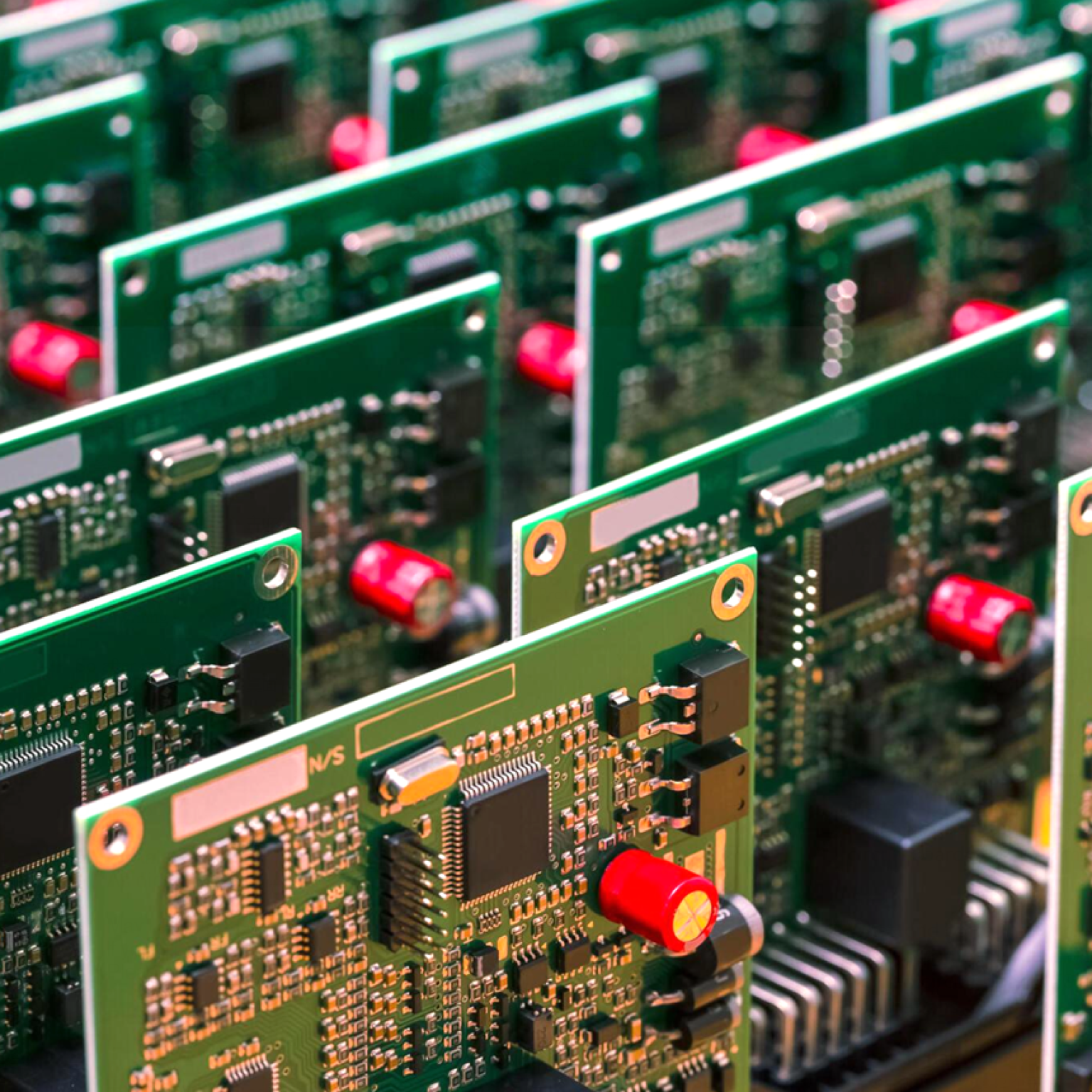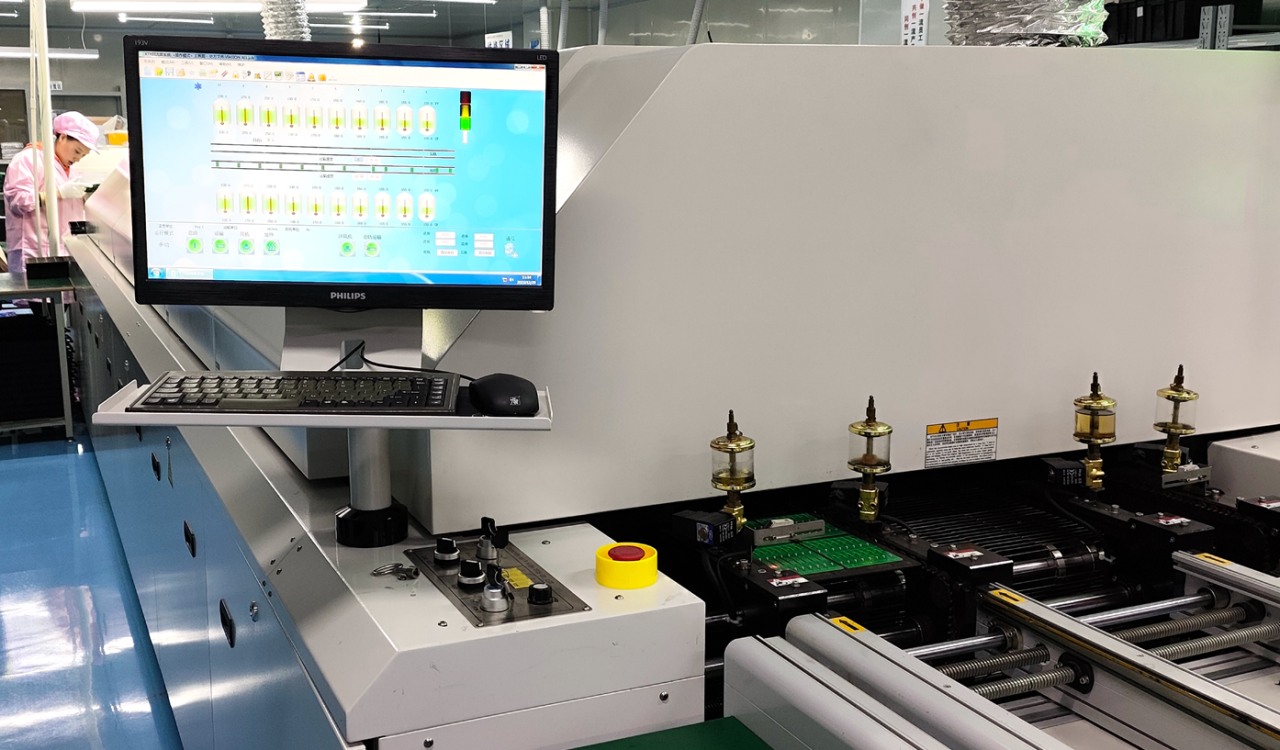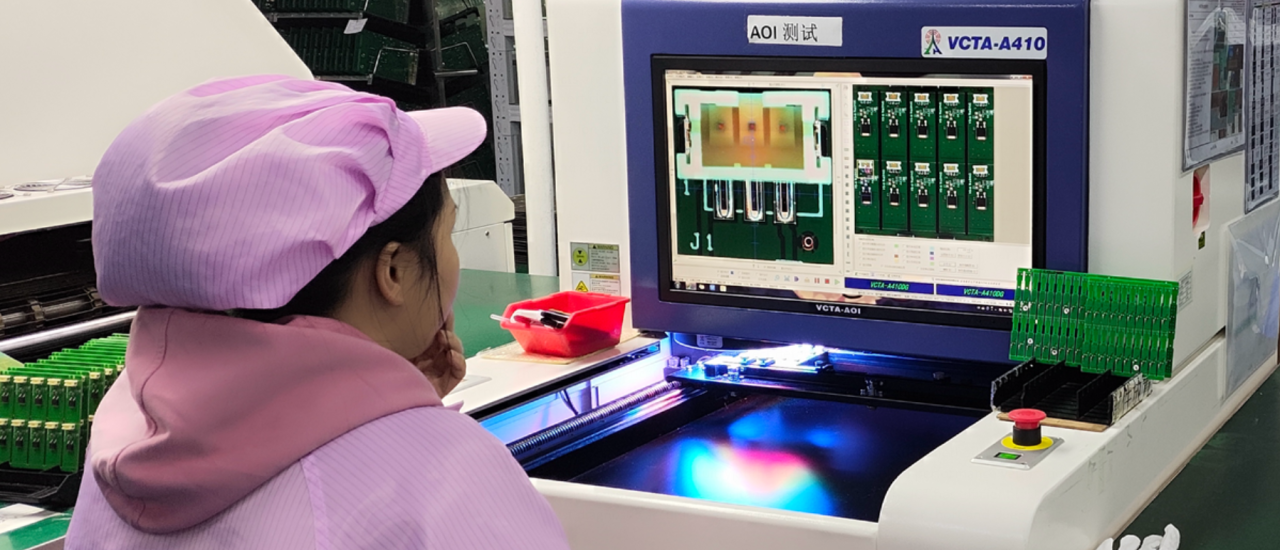
Think about how technology has made everything very convenient. Take the example of electric cars that can run on autopilot. These cars have cutting-edge technology that enables sensing, battery charging, autonomous driving and exceptional infotainment. These savvy features are all integrated into a sleek and compact vehicle that feels very luxurious.
Hidden inside are intricate boards called “Printed Circuit Boards” that provide physical support and interconnect electrical components. Although “off-the-shelf” or readily available PCBs are usually the most cost-effective option, printed circuit boards can also be designed, fabricated and assembled based on customer requirements and specific applications. These types of application-specific PCBs are called customized PCBs, and the assembly of these customized PCBs are called custom PCB assembly. Electric vehicles are just one of the many examples that contain these customized PCBs. Other applications include medical, commercial, industrial market segments, telecommunications, energy and power, IoT, robotics., etc.
Custom PCB assembly is referred to as the manufacturing of boards based on customers' distinct requirements. This includes converting the schematics design to a physical PCB layout, choosing applicable materials and populating components in the PCB. PCB assembly custom should have streamlined strategies combining design and manufacturing aspects. Custom PCB has increasing demand due to its specific application in various industry sectors, for medical, automotive, and commercial segments. In a world fraught with electronic products and gadgets, custom PCB assembly services become particularly prevalent among PCB suppliers. In this regard, China custom PCB assembly has gained popularity in the world market.

Viasion fully implements a strict enterprise management system, from production and sales to after-sales service in all aspects of institutionalized, process-oriented, standardized and systematic operation, and strictly implements the international ISO9001 quality system standards to ensure the rigorous process of the enterprise.
16+ Years of Experience:Viasion has been supplying PCBs and PCB assembly since 2007. So have an experienced sales and engineering team, and also very skilled workers who know PCBs very well.
High Quality Products:"Quality Comes First" is a slogan. All staff in Viasion strive our utmost to meet this goal, to supply the highest quality products to our customers. Viasion has gained international quality management certifications such as ISO9001, TQS., etc.
Competitive Pricing:Reasonable and competitive pricing does not mean we will compromise quality. On the other hand, we trying our best to increase yield rate and efficiency in our production, to save cost and to supply cost-effective products.
One-stop Solution:Viasion can realize all demands of your custom circuit boards, from PCB design, PCB fabrication,PCB assembly and full turnkey box build assembly.
Great Customer Services:The sales team of Viasion is always responsive, no matter if it is an RFQ, order, question, engineering question or complaint. At the same time, you can easily get in contact with our CEO if you cannot get a satisfying answer from any representative.
We have focused on custom PCB printing and assembly since our foundation in 2007. We are serving more than 1000 customers worldwide in various industry areas. Please contact us freely for any kind of PCB assembly requirement. Please check our capabilities at https://www.viasion.com/pcb-assembly-capabilities/ .
To ensure that the flexible PCB assembly is handled according to your specifications and expectations for the best results, the experts in Viasion do their best to complete the task. Even though they already have ample experience, they continue to improve their level of knowledge and understanding of flexible PCB assembly just to be able to provide better products and services of flexible PCBA to our customers. Viasion has successfully worked with different categories of companies all over the world, and the positive reviews from our customers demonstrate that we are trustworthy and considered to be one of the best companies providing flexible PCB assembly services. Moreover, you don’t have to worry about paying too much, Viasion will provide you with affordable and high-quality flexible PCB assembly services, which is what we are highly regarded for.
Single-sided PCB: The circuit pattern is only applied on one side of the board. This is the simplest type with the most basic processing and minimum cost.
Double-sided PCB: Both sides of the PCB have circuit patterns. The component density is higher than the single-sided PCB.
Multi-layer PCB: The increasing density and complexity in PCB design paved the way for the development of multi-layer PCBs. Multi-layer PCBs have several layers with a prepreg material sandwiched in between.
Rigid PCB: Most boards nowadays are still rigid boards, meaning they are made using stiff or rigid dielectric woven glass material.
Flexible PCB:It is a thin and flexible substrate that provides superior thermal and electrical performance. It is composed of high-strength polymer material that is typically used in mobile phones, disk drives and cameras. Fine and tiny patterns can be printed into the flexible circuits.
Rigid-flex PCB:Rigid-flex PCB is a combination of rigid and flexible boards that are bonded together. Rigid-flex and flexible printed circuit boards can also be single-sided, double-sided or multi-layer.
Flexibility in Design & Functions:Flexible arrangements with custom PCB assembly suppliers to accommodate customer needs and requirements. During board preparation, the customer can select the size and the type of components to use with limitless options for the design. Flexibility in custom PCB assembly service is observed in the following aspects: Flexible technology, flexible and diverse multi-skilled engineering support, and a flexible organizational structure.
Cost Optimization: Cost optimization by selecting materials according to function and application.
Better Efficiency:PCB customization makes room for better efficiency since design development focuses on functionality and eliminates unnecessary elements on the PCB.
Better Performance:In custom PCB assembly services, performance is optimized by minimizing noise and enhancing signal integrity. This is made possible by generating a detailed design while considering component placement, size, signal routing and other specific requirements. Custom PCBs are easier to market due to their uniqueness.
Competitiveness:Customizing PCB has better competitive advantages due to its distinctive design and functionality.

Flexible arrangements with custom PCB assembly suppliers to accommodate customer needs and requirements. During board preparation, the customer can select the size and the type of components to use with limitless options for the design. Flexibility in custom PCB assembly service is observed in the following aspects: Flexible technology, flexible and diverse multi-skilled engineering support, and a flexible organizational structure.
The first step in customized PCB assembly services is solder paste printing. In this step, a solder paste is deposited into the printed circuit boards through stencil printing. To evenly distribute the paste, a squeegee is pressed into the stencil aperture, traversing across the stencil surface. According to studies, more than 50 % of soldering defects are caused by solder paste printing issues. Optimization and evaluation are required to improve first-pass yields. Various factors influence stencil printing performance, including stencil aperture size, solder paste property, and parameter settings. Some defects can be encountered during solder printing like bridging, wherein the solder paste “bridged” to the adjacent pads induces electrical shorts.
Solder joint quality is very important to ensure electrical connections between components and the PCB board. The volume of the solder paste can be measured using an automatic optical inspection system. The solder paste inspection machine captures an image of the PCB and is analyzed using processing software by matching the image of the solder paste to a known acceptable image. Lighting is critical in all inspection systems to have an enhanced image for more accuracy and efficiency. Positioning of the lighting must also be studied to ensure that all areas of the solder paste are inspected.
Component placement machines are high-speed, automatic machines that can accommodate high production demands. In this custom PCB assembly step, electronic components with various types, shapes and sizes are being mounted on the bare PCB. The machine arm first goes to the home position and moves to the gripper fixture. After getting the right gripper, the arm moves to a specific feeder, picks the component and positions the component at the intended location on the PCB. The sequence of the pick-and-place movement of the machine goes on until the last component is placed at the proper locations on the board.
An issue that can arise during component placement is misalignment of the components brought about by the fluid properties of the solder paste and the unbalanced placement during machine arm movement. Self-alignment can still happen during the subsequent reflow process, but component shifts should still be minimized and optimized. Other sources of component shifts are machine vibrations, unstable PCB placement and uneven distribution of solder paste.
The boards with the paste and mounted components are passed through a reflow oven in which pre-heating takes place to evaporate the flux, reach a peak temperature to melt the solder paste and form intermetallic compounds to achieve the desired solder joint. To fully attach the components to the PCB pad surface, the temperature must exceed the melting temperature of the solder alloy. This melting process allows the metal fillers to coalesce into a volume of solder then wets the PCB surface.
This reflow step is achieved using a furnace with a series of heating zones that can be individually programmed. Modern reflow machines typically use convective heat transfer to effectively heat the entire PCB assembly custom. A common approach to evaluating the reflow profile for a custom PCB is attaching external thermocouples based on engineering judgement and expertise from previous similar products or component types. The boards are then passed through the oven, with initial settings which can then be modified until the most optimum thermal profile is obtained. A thermal profile is a time-temperature graph that dictates the heating distribution to have proper solder joints between the PCB and solder paste. There are four major stages during reflow soldering:
Pre-heating:Slowly increase the temperature to precondition the board.
Soaking:Activation of the flux to prevent metal oxidation of PCB surface pads.
Reflow:Melting of the solder particles, turning into liquid.
Cooling:Solder joints are finally formed between the component and PCB pads.

Quality is paramount in custom PCB assembly service. Any PCB defect should be detected early and accurately during custom PCB assembly to prevent failure during applications. Manual visual inspection has limitations like high misdetection rate and low processing rate. Automatic Optical Inspection systems have certain advantages like high efficiency, zero handling-related defects and inspection accuracy. The AOI scans the entire board, captures images, and compares them with reference images to know if there are any abnormalities or defects.
Cost plays a major role in decision-making among supplier sourcing teams. A custom PCB assembly manufacturer that can offer low prices will have the edge of being selected among a list of potential candidates. Despite unique requirements, a custom PCB assembly supplier should be able to provide a competitive price advantage to be chosen as a custom PCB assembly service. Higher quantity often helps to cut down the cost. A detailed quotation will help you understand the cost of each material and custom PCB assembly process and will give you hints as to how to further reduce the cost and negotiate with the custom PCB assembly manufacturer. Various factors affect the prices of a custom PCB like layer counts, choice of materials, size of the PCB and design complexity. In this way, China custom PCB assembly manufacturers have great advantages over custom PCB assembly manufacturers in European countries.
A custom PCB assembly supplier that can provide fast turnaround time will have an advantage during supplier selection. The turnaround time is highly dependent on the complexity and the required quantity of the custom PCB design. The entire custom PCB assembly services from PCB fabrication to assembly should be considered to understand the delivery time and logistics considerations. Penalty must be agreed upon if the lead time is not met. There should be a flexible option for faster delivery and shorter lead times. All these terms and conditions should be well-defined in the quotation. Most of the time, China custom PCB assembly suppliers do a great job in lead time and logistics.
The custom PCB assembly manufacturers often provide a checklist that they need to fill out and respond with regard to their quality and regulatory compliances. Certification of ISO9001 is usually the first requirement in shortlisting custom PCB assembly suppliers. ISO has a set of standards that define the requirements for a quality management system. Underwriters Laboratories or UL is also an independent, product safety testing organization that certifies electronic products. All the components, up to the tiniest part, should meet the UL requirements to ensure compliance with safety, quality and performance. A custom PCB assembly service provider should also have quality controls in their production lines to have immediate detection of defects and to easily rectify any issues during custom PCB assembly. Electrical testing of the PCB is a prerequisite prior to shipment so that only good boards are shipped out to the customer. All these quality controls must be evident through documentation.
Since printed circuit board assembly requires highly technical and specialized machines, a custom PCB assembly manufacturer should have the available resources and capability to support customized PCB assembly services. Since custom PCB designers and custom PCB assembly suppliers will communicate and deliberate frequently on the requirements, limitations and risks, the preferred custom PCB assembly supplier should have the expertise and technical know-how on the design rules, equipment capability and potential issues that could arise. Issues and delays may arise if the requirements are misunderstood during the initial phases of the custom PCB project. A site visit will also significantly help in the actual and firsthand assessment of the customized PCB assembly services supplier. During the visit, the PCB assembly line and controls can be evaluated and audited to know whether the manufacturing site will be able to produce quality PCBs.

Unlike mass production PCB assembly, low-volume custom PCB assembly requires more time and energy while its yield is comparatively low. As a result, many PCB suppliers show scant interest in low-volume custom PCB assembly services. It leads to fewer custom PCB assembly manufacturers who can only meet the requirement of medium or small batch production. Because of technical constraints and other factors, some custom PCB assembly manufacturers have a minimum order quantity. Therefore, customers had better discuss with custom PCB assembly services provider ahead to manage costs and relevant problems. It is advisable to contact China custom PCB assembly manufacturers if you intend to cut spending.
Mass production of custom PCBs is becoming increasingly popular due to several benefits. Custom-designed for specific applications may be the best choice especially if standard PCBs do not fulfill the required performance. Design development and prototyping should be done during the initial phase to determine that the customized PCB will function based on requirements. If not designed and tested well, the whole series of designing, building and testing will be needed which means additional cost and time for the project.
Therefore, finding the right custom PCB assembly services provider is very important to have streamlined communication and requirements understanding throughout the product lifecycle. If you are looking for any possible custom PCB assembly supplier, look no further than Viasion Technology, a China custom PCB assembly supplier.